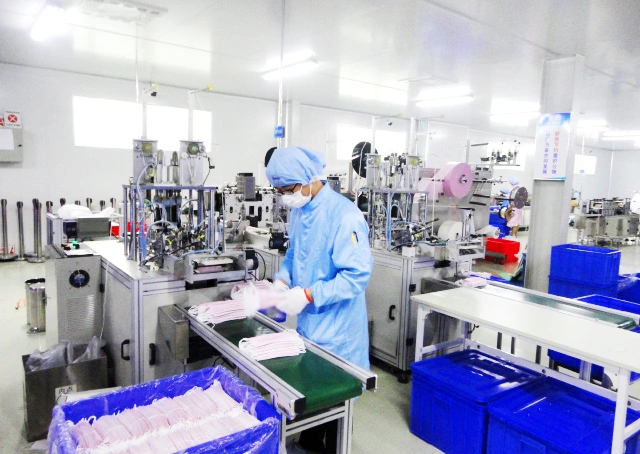The main difference between sterilized and non-sterilized medical masks lies in whether they have undergone sterilization treatment. Sterilized masks are suitable for high-risk medical environments (such as operating rooms) and can effectively prevent cross-infection between doctors and patients. Non-sterilized masks are suitable for daily protection or low-risk scenarios. They are cheaper and can meet basic protection needs. Both meet medical standards. The choice should be made based on the specific usage scenario.

Core Differences and Applicable Scenarios
Sterilized mask
Sterilization treatment: During the production process, sterilization is carried out through methods such as ethylene oxide or irradiation, with stricter microbial indicators (such as no colony detection). Applicable scenarios: Operating rooms, icus, infectious disease wards and other high-risk medical environments, or people with low immunity (such as chemotherapy patients). Standard requirements: It must comply with the sterilization grade requirements stipulated in YY 0469-2011 "Medical Surgical Masks".
Non-sterilized masks
General disinfection: Only after routine disinfection treatment, the microbial indicators allow for the presence of a small amount of colonies (such as the total number of bacterial colonies ≤100 CFU/g). Applicable scenarios: General outpatient clinics, public transportation, offices and other daily protection scenarios. Standard requirements: Comply with YY/T 0969-2013 "Disposable Medical Masks" or the standards of the same level.
performance comparison
Protective capacity: There is no significant difference between the two in core indicators such as particulate matter filtration efficiency (PFE≥30%) and bacterial filtration efficiency (BFE≥95%). Safety: Sterilized masks are safer in scenarios such as open wounds and invasive operations due to stricter microbial control. Shelf life: Sterilized types usually have a longer shelf life (3-5 years) due to stronger packaging sealing. The non-sterilized type is mostly 2 to 3 years old.
Selection suggestions
Medical workers or high-risk exposure groups: Sterilized types should be given priority, especially during surgeries, intubation and other operations. 1. Daily protection for the general public: Non-sterilized types offer better value for money and can prevent the occupation of medical resources. 2. Special groups: People with allergic constitutions are advised to choose irradiation sterilization products without residual sterilizing agents. For children, small-sized masks that fit the face shape should be selected.
Common Misunderstandings
"Sterilized masks are more virus-resistant" : The novel coronavirus is mainly transmitted through droplets, and non-sterilized masks can effectively intercept it. "Non-sterilized unhygienic" : The number of colonies in non-sterilized masks that meet the standards is far below the pathogenic threshold, making them safe for daily use. "Sterilized and reusable" : Medical masks are disposable products regardless of whether they are sterilized or not. Reusing them will reduce the protective effect.
matters need attention
Packaging integrity: If the packaging of sterilized masks is damaged, they will lose their sterility and should be treated as non-sterilized ones. Wearing instructions: Correctly covering the mouth and nose and pressing the nose clip tightly is more important than choosing sterilized or non-sterilized. Storage conditions: Avoid high-temperature and humid environments. For non-sterilized types, if stored for more than one year, check for moisture and deformation.
Summary: The protective performance of the two types of masks is similar. The key to choosing lies in the usage scenario rather than "superiority or inferiority". Ordinary people do not need to blindly pursue sterilized masks. The rational use of non-sterilized masks can not only meet the protective needs but also reduce the waste of resources.


 24-Jun--2025
24-Jun--2025